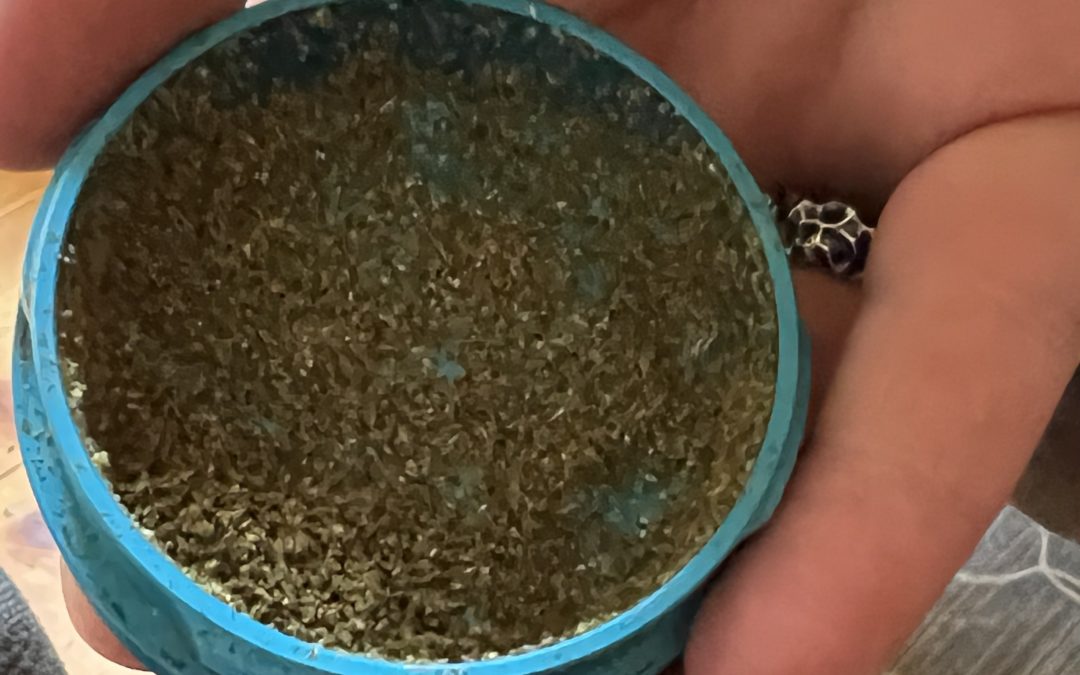These were among the more unusual questions posed to me recently, so I thought I’d answer publicly.
First, what is Kief? Kief is a powder containing the dry trichomes of the cannabis plant. Trichomes are the little sacs that grow in the flowers of the cannabis plant that contain almost all of the cannabinoids and terpenes.
In essence, kief is the simplest form of a cannabis concentrate. Rather than extracting the cannabis chemicals using chemicals, in this case simple mechanical rubbing knocks these sacs off the plant material which can then be collected and used. When kief is pressed into a sticky solid block it’s called Hashish.
While average strains of cannabis now hover around 20% THC, kief is typically about 50% THC since all the inert plant material has been removed. So you can see that it’s more concentrated than typical flower. It can be smoked or vaporized like flower, but packs more than twice the punch.
Is this good or bad? Typically higher concentration is not helpful to my patients. The goal of medical use is to use the lowest dose necessary to control symptoms. This is usually much lower than doses used for recreation, and higher concentration products make it hard to get those low doses and to be precise about the dose each time. Overall, I see no good use for higher concentration products that are to be used directly in humans. (They can make reasonable ingredients in other products like edibles where the dose is cut with other ingredients).
Further, higher concentration products like kief lead to using higher doses than are needed. This promotes tolerance (not a good thing) and dose escalation. This, in turn, can lead to dependence and even Cannabis Use Disorder. These are problems we’d like not to create while treating other medical conditions.
Most dry herb vaporizers are not designed for kief directly. The powder gets too gummy inside the machine. Typically one might sprinkle some kief onto the dry flower than you put into the machine. However, as you can see “sprinkle some” leaves us with no idea what dose you’ll actually get. Suffice to say it will be more than the flower alone, which would be enough. Kief is not adding any benefit, just complication.
Also, as you probably know, cannabinoids hate water! Putting any cannabis product: kief, tincture, chocolate, whatever, into your coffee or other beverage is not a good idea. The cannabinoids will not dissolve into the drink – rather they’ll float on top and stick to the cup as you tip it to drink. I suppose you could add an emulsifier like mustard or egg yolk to get it into solution, but that would be pretty icky coffee.
In the end, my advice is not to futz with kief. It’s only going to make dosing your medicine difficult and iffy which can lead to overdose, misuse, and dependence. Similarly, I’d avoid putting any cannabis product into water because it will make dosing your medicine difficult and iffy, though more typically leading to under-dose and poor control of the symptoms we’re treating. When it comes to medical treatment, we need to stick to what works – vaporizing low dose cannabis flower or similarly low-dose edibles.
Consult with a Qualified Boston Medical Marijuana Expert Today
Those considering using THC, CBD, or any type of medicine found in cannabis to help manage their condition should consider speaking to a trained medical expert who is knowledgeable about using cannabis therapeutically. Massachusetts medical marijuana doctor Jordan Tishler, M.D. sits on the faculty of Harvard Medical School and has years of experience helping patients treat pain and other ailments using cannabis. He and the team at InhaleMD stand ready to assist patients in determining whether medical marijuana is right for them. For more information, or to set up a virtual consultation with the team at InhaleMD, call us at (617) 477-8886 today.

